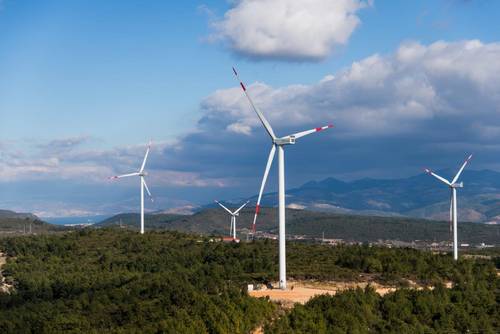The share of renewable energy sources (including hydro) had increased from 43.3% to 44.7%, and the share of total wind installed capacity increased from 7.9% to 8.4% in 20181. Turkey’s installed Wind Power Plants capacity is 6.9 GW2. In 2018, 6.7% of the electricity generation was generated from Wind Power Plants3. Even though, we had been witnessed breathtaking developments in wind energy sector recent years, it is clear that we have a long way to go. Furthermore, keep in mind that renewable energy investments are crucial considering the vital role of it in reducing energy dependence, reducing carbon footprint and ensuring energy security supply.
Let’s take a look to the recent developments in wind energy market of Turkey: After the first wind energy renewable energy source zones project (YEKA RES-1) tender for WEPPs in 2017, YEKA RES-2 tender for Bal?kesir, Çanakkale, Ayd?n and Mu?la connection regions with a capacity of 250 MWe was held on a few weeks ago. This one-billion-dollar investment not only expected to meet the electricity needs of approximately 1 million 200 thousand households but also shows an obvious trust to the Turkey’s renewable energy market’s investment climate. It is worth noting that the license period of the facilities to be established within the scope of YEKA RES-2 tender will be 49 years.
The winner bids of the aforementioned YEKA RES-2 tender are as following:
- Enercon’s bid of 4.00 $/cent for for Mugla WPP,
- Enerjisa’s bid of 4,56 $/cent for Ayd?n WPP,
- Enerjisa’s bid of 3,67 $/cent for Çanakkale WPP,
- Enercon’s bid of 3.53 $/cent for Bal?kesir WPP,

Considering that the first auction for YEKA was won with a bid of 3.48/$ cent, some can argue that the prices in YEKA RES-2 are relatively high. Of course, the main reason of the price difference is that the YEKA-1 tender was held for a thousand MWe. In other words, the scale economy of the investments might be the main reason for the stated price gap. On the other hand, despite the recent economic developments such as the raise of the interest and the volatility in the exchange ratios, we can underline that YEKA-2 RES tender is very important for being an indicator of real confidence in our country’s future. Eventually, we can cheer for Energy Ministry’s harvest feast of its “local and national” energy policies.
As per Art. 6/1-(h) of the Renewable Energy Source Zones Regulation, tender announcement should include, “maximum price and purchase time for the electricity” along with the other information set out in the stated Regulation. Therefore, according to the YEKA-2 RES announcement winning companies have 15 year electricity purchase guarantee for the electricity to be generated by their WPPs to be installed on subject areas within the context of YEKA Usage Right Contract which will be signed between the winners and the Ministry of Energy and Mineral Sources.
Having said that, we should notice that there must be some considerations which should be keep in mind while designing the legal framework of the Turkey’s renewable energy support policies which are as follows:
- The global tendency for promoting the distributed energy generation
- Significant decreases of WPPs investment costs
- Negative effects of long-term contracts to the competitive markets
- Market distortion effects of the incentives
In that vein, when we examine the outcomes of the recent YEKA RES-2 tender, the decrease of the amount of tender capacity from 1.000 MWe to 250 MWe shall be assessed as a positive development. The other noticeable differences of YEKA RES-2 from RES-1 is as such: i) making the tender region by region which allowed the calculation of the local wind potential and ii) removal of local production condition. Furthermore as we mentioned before, the number of the attendants and the final deals show us the trust of the investors to the Turkish energy market. By the way, it is worth noting that the expected yearly growth ratio of electricity demand in low scenario is over 3%. It makes the market attractive for the investors. However, predictability is an invaluable asset for the investors so we are expecting good news from the government regarding the renewable support scheme which will be effective after 2020 at their convenience.
Footnotes
1. EMRA 2018 Electricity Development Report: p.25.
2. ?bid: p. ??.
3. ?bid.
The content of this article is intended to provide a general guide to the subject matter. Specialist advice should be sought about your specific circumstances.


